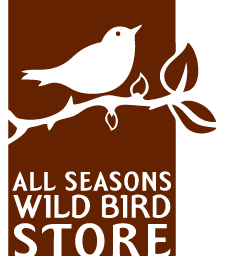ANN’S WINDOW TO NATURE
Migration refers to the seasonal movement of animals from one area to another and back again. Most birds migrate in the fall and in the spring. In fact, millions travel each year between breeding grounds in the north and wintering grounds in the south where food is plentiful. Many of our favorite songbirds spend the winter months in Mexico, Central America, and South America including the Baltimore Oriole, Ruby-throated Hummingbird, Great Blue Heron, as well as warblers, waterfowl, shorebirds, grossbeaks, sapsuckers, pelicans and many others including our State Bird the Common Loon.
Migration is very dangerous. Some birds do not survive. Weather, starvation, dehydration, and predators are real threats. Millions of migrating birds are also lost to strikes (hitting windows, windmills, and radio towers).
Most birds migrate along one of four major flyways:
- Atlantic Flyway
- Mississippi Flyway
- Central Flyway
- Pacific Flyway
The four major flyways are much like super-highways because they provide efficient routes that are easy to navigate and full of way-side rest-stops.

Ways to Observe Migration
We Minnesotans are so fortunate to live on the Mississippi Flyway. We are also fortunate to have nearby migration staging grounds associated with fall migration such as wildlife management areas, national wildlife refuges:
- Hawk Ridge in Duluth
- Sherburne National Wildlife Refuge in Zimmerman
- Minnesota River Valley in Bloomington
- Agassiz National Wildlife Refuge in Thief River Falls
- Weaver Bottoms in Frontenac
There are many local organizations and nature centers that host bird migration lectures and viewing trips. Similarly, there are many wonderful birding guides with similar information including A Birder’s Guide to Minnesota by Kim R. Eckert—a wonderful county-by-county guide to over 1,400 birding locations.
Nationally, there are several initiatives associated with protecting critical migratory habitat including BirdScapes, which was established by the American Bird Conservancy (ABC) to secure conservation zones.
Migration is an area of increasing interest among bird enthusiasts. BirdCast provides a radar-based, live-feed measurement of migrating nocturnal birds. It includes the total number of birds, directions, speeds, and altitudes. BirdCast is conducted by an alliance of “interdisciplinary researchers, organizations, collaborators, supporters, and partners.”

How Can We Help Our Migrating Birds
Offer clean water and fresh seed to your backyard songbirds year-round. Suet and seed that is high in fat will help build energy stores needed for migration. Likewise, spring early arrivals are often famished and in poor condition. Any seed, suet, or nectar would make a huge difference in improving their body condition necessary for mating and nesting.
By Eagan Store Manager ANN MCCARTHY
Migration Fun Facts:
- Birds can reach speeds of 15–30 mph during migration.
- Birds can fly non-stop for up to 8 hours.
- Birds can fly over the Gulf of Mexico, which is 600 miles in length.
- Birds often migrate at night when the air is cooler, and many predators are sleeping.
- Birds migrate at different altitudes, which can range from 500 feet to 35,000 feet.
- Migration is thought to be triggered by the number of daylight hours, temperature, and food supply.
- Birds use several cues or “maps” to guide them along their migration route including the position of the sun and stars, the earth’s magnetic pull, and homing instincts.
- Birds may return to the place where they were born.
- North/south flyways are used by mass numbers of birds because they provide food for refueling, resting areas and a certain amount of safety from predators.
- There has been an increase in year-round residents including American Robins and Eastern Bluebirds.

